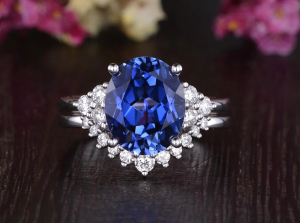Ideas For Homemade Soap Additives

Beyond colorants and essential or fragrance oils, there are a number of neat things you can add to your homemade soap. One of my favorites is honey (which is a humectant), but there is also milk, glycerin, silk, shea butter, tomato paste, cocoa powder, fruit juice and pulp, dried herbs and flowers, finely chopped oatmeal, cornmeal (for an exfoliating bar), poppy seeds, finely ground coffee beans, beer and wine, citrus zest, berry seeds, yogurt, aloe vera gel, Vitamin E capsule contents (2-3 per pound), seaweed, uncooked adzuki beans or almonds ground into a fine powder, and embedded objects. In cold process soapmaking, whisk in these additives after you’ve blended to an appropriate trace. For liquids, add at a light trace. For anything you want suspended evenly throughout the bar (oatmeal, seeds), add at a heavy trace or else the additive will sink to the bottom.
As far as milk goes, you can really use any type of milk-cow’s, goat’s, cream, buttermilk, half and half, plain yogurt mixed with water, even powdered milk. Use the milk directly in place of the water your recipe calls for. However, I once used Egg Nog, and it turned dark brown and lost its rich smell. Whatever milk you use, freeze it before you use it. It should be “slushy” when added to the mixture. Milk soaps have a tendency to overheat, as do honey soaps.
Additionally, any time you use alcohol in a recipe, let it go flat or boil it to release the alcohol, then chill it before use. If you don’t even a small 1/2 pound batch will start explosively boiling when the lye is added.
As far as honey goes, add about 1/2 ounce per pound of soap. Be sure to spray the honey measuring spoon with non-stick cooking spray to so you don’t have honey residue sticking to the spoon and altering your measurement.
To embed objects in your soap, put, say, a small plastic toy, rope for soap-on-a-rope, or similar item into the soap mold then pour the soap batter into the mold. Of course, this works best with see-through or glycerin soaps, which are usually “melt and pour” projects-not handmade cold processed soap.
When adding dried herbs or flowers, sprinkle them on top of soap just poured into the mold or stir them in with a whisk right before pouring into the mold. Most herbs will turn brown in your soap over time. Dried herbs often bleed a brown color out into the soap surrounding it as well. Some people find this unsightly, while others feel it is beautiful and a mark of the soap being handmade from natural ingredients.
For more information on this and other soapmaking topics, go to How2MakeSoap.Net. This website also offers free soapmaking video tutorials, pictures of the soapmaking process, free beginner soap recipes, and a 50-page soap “how to” eBook for $12.99. The eBook includes 39 one-pound soap recipes, 60 soapmaking pictures, and details on how to make your own soap recipes.






